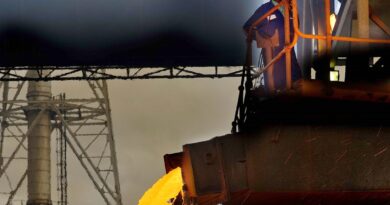Could hydrogen help reduce emissions in the aluminium industry?
Aluminium is found in everything from cars to phones. But one of the challenges of producing this essential material responsibly is finding ways to decarbonise the process.
Part of the reason is creating alumina – the main ingredient in aluminium – takes a lot of energy, which in turn creates greenhouse gas emissions. Rio Tinto knows new technologies will be essential to helping Rio Tinto reduce its emissions, but many haven’t been proven. And some not yet discovered.
That’s why research, like Rio Tinto partnership with the Australian Renewable Energy Agency, is so important. Through this study at its Yarwun alumina refinery in Gladstone, Queensland, Australia, the company hopes to find a way to use renewable hydrogen in alumina refining – and other industries too.
Here are five reasons why hydrogen could help reduce industry emissions:
- Hydrogen burns cleanly.
- When you burn hydrogen, you get steam. Nothing else.
- The steam and water created can be put to good use.
Steam can be captured and used in other parts of the refining process. Then, it can be condensed into water, which can be recycled to create more hydrogen. That’s something Rio Tinto is looking at as part of this study.
It’s important because creating 1kg of hydrogen takes 9kgs of water (if, like your friendly editor here, you didn’t study chemistry: it’s the H in H2O). So, creating truly green hydrogen needs renewable energy AND a renewable water supply.
It has good combustion properties.
Part of the process of extracting alumina from bauxite involves burning the mineral at around 1000 degrees Celsius in huge heaters, known as calciners. And there are only a few ways you can achieve the temperature needed. Hydrogen’s properties make it well suited to these kinds of industrial processes, like alumina refining.
If we get the technology right, it could make hydrogen more affordable.
For hydrogen to be widely adopted, it also needs to be a cost-efficient solution. One of the ways Rio Tinto can make it more affordable for wider industrial use is by developing technologies that can be built into existing infrastructure, avoiding the need to build new equipment or making large-scale (expensive) modifications.
Rio Tinto engineering teams are looking at how we may be able to do that. It can be powered by other types of renewable energy. Solar and wind power can be used to drive the processes behind creating renewable hydrogen.
WHAT WE WILL LEARN FROM THE STUDY
- How hydrogen can be stored, transported and used safely for alumina refining
- Engineering solutions for designing and building equipment to capture steam and burn hydrogen at an industrial scale
- What we learn will help us with the next step: testing full-scale pilot technology that can be safely retrofitted to existing refineries.




